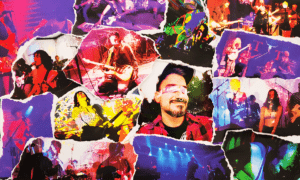In December of 2019, a Twitter user in Seattle posted an image of a homeless person sleeping on the cold ground near a bench. The bench in question, meanwhile, was occupied by a bronze sculpture called Homeless Jesus; a bronze depiction of a sleeper huddled under a blanket on a 7-foot-long bench, and only recognizable as Jesus by the crucifixion wounds on his feet.
Canadian artist Timothy P. Schmalz, who installed Homeless Jesus outside the Christ Our Hope Parish in downtown Seattle, describes the work on his website as “a visual representation of Matthew 25, that Christ is with the most marginalized in our society.” This is one of many Homeless Jesus statues installed in cities around the world, including one outside the Office of Papal Charities at the Vatican. But critics have argued that the money set aside to pay for the statue could have been used to directly help the homeless, while others are labeling the sculptures as “hostile architecture”, a term for something intentionally designed to displace those already taking shelter there.
The Itinerant, installed in 1981 near the intersection of Broadway Ave. E. and E. Harrison St. in Capitol Hill, fits the deterrent category. It’s an aluminum sculpture of a man sleeping on a park bench with a newspaper covering his face. It was considered a “major facelift” of the area by local merchants at the time. The artist, Richard Beyer (1925-2012), was responsible for a number of public installations around Seattle, most famously People Waiting for The Interurban, located in the Fremont neighborhood.
Urban-design strategy (or hostile architecture) uses elements of the existing environment to purposefully guide or restrict unwanted behavior in order to prevent crime and maintain order. This strategy unfairly targets people who rely on public spaces more than others, such as youth and the unsheltered, by restricting or limiting the physical behaviors in which they can engage. These elements are designed to deter “loitering”, an umbrella term which includes smoking, littering, sleeping, or skateboarding – the last of which is presumably frowned upon by local business owners, since skateboarding accidents can lead to potential lawsuits in the event of injury. Skatestoppers are small blocks of metal welded, bolted, or glued to downward sloping handrails or the beckoning stretches of smooth concrete in order to deter skateboarders. (There are probably videos on YouTube which offer hands-on solutions to those problems, but you definitely didn’t hear that from us.)
Other elements of this passive-aggressive design strategy include sprinklers in public spaces for the purpose of watering squatters, park benches with (ergonomically awkward) armrests down the middle or two short benches that render the bench impossible for sleeping, and large boulders or works of art (read: corporate decoration) that fail to provoke or stimulate intellectual thinking but are instead there to break up or disrupt homeless gathering places. Large cones of stone have been added to the corners of older buildings in European cities which forces people out of these spaces (and also makes it impossible for someone to relieve themselves without having it splatter back on them.)
Hostile architecture doesn’t just impact the homeless; not everyone can stand or lean comfortably while waiting for a bus, nor can they all fit in the limited amount of space afforded by the armrests in the middle of these benches. Standing or leaning benches, fenced-off underpasses, and spikes in alcoves are all designed to stop the unsheltered from getting comfortable. It’s an unspoken “move long, you aren’t welcome here” and it forces people to stay in unsheltered areas. With summers getting hotter every year, this sets a dangerous precedent.
According to King County’s 2019 “Point in Time” count of homelessness issues, nearly 30% of people experiencing homelessness in the county have disabling health conditions such as asthma and heart problems, which can be adversely affected by hot weather. Risks of skin cancer and heatstroke rise sharply when people lack a form of shade or shelter. People are hospitalized and die every year from exposure.
So, if everyone can’t exist in a public space, can it still be called a public place? If supporting local business is so important to us, what rights do these business owners have when it comes to protecting themselves from lawsuits? What can be done to help the homeless in Seattle? And what does a perfect world really look like?












Be First to Comment